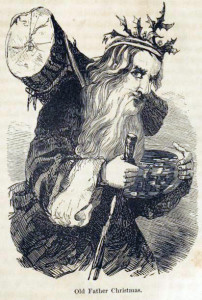TWELFTH DAY of CHRISTMAS
Epiphany
Do you know the old hymn “Brightest and Best?” I think it’s sometimes called “Star in the East.” No matter what you call it, it is a good song to sing for today, Epiphany: Brightest and best of the sons of the morning; Dawn on our darkness and lend us thine aid; Star of the East, the horizon adorning, Guide where our infant Redeemer is laid.
That star of the east guided the Magi, and Epiphany marks the day they arrived at the stable in Bethlehem and first beheld the divine child born at Christmas. Tradition tells us the Magi were three wise men: Caspar, Balthasar, and Melchior. They each brought a gift to the child, gifts rich with symbolism: Gold for kingship, frankincense for the priesthood, myrrh for death and burial. The manifestation of the child to the Magi represented his manifestation to the broader world: it was no longer a local event.
When I was a boy, Mom would sometimes refer to Epiphany as “Little Christmas,” and this is certainly one good way to look at this unassuming holiday/holyday. It holds a special place in my heart because the passing of Christmas Day always made me a bit melancholy, even as a boy. Epiphany, or Little Christmas, gave me a bit of Christmas to hold on to all the way to the sixth day of January.
Over the years, our traditions for the day have grown to include a bit of practical magic. Some of you may do this, too, and if you don’t, perhaps you should, for magic is powerful stuff, and here is magic anyone can conjure: It is a simple ceremony at the front door, outside on the front porch, to close the celebration of Christmas on Epiphany night. We gather up all who are in the house and we each take turns writing with chalk on the lintel above the front door the numbers and letters and symbols of a traditional inscription. This year, it will read as follows: 20+C+M+B+16. These are the initials of each of the Magi, punctuated by crosses, blanketed on either side by the year. For me, the inscribing is always accompanied by a silent prayer that no one will be missing when we gather next to write this same inscription.
There are some years where the inscription is quickly weathered and by the following Christmas it is there only as a faint ghost of itself. Other years it remains clear as day throughout the year. All the year through, though Christmas be gone, still the inscription is there to remind us of Christmas’s presence as we pass each day through that portal. The inscription is a magic charm of sorts, protecting the house and those who pass through that doorway, harboring the goodwill and spirit of Old Father Christmas.
Tradition tells us that this is the day to take down the Christmas tree. Some, in fact, think it bad luck to leave Christmas decorations up longer than Epiphany, though we don’t subscribe to this notion. We like to return all natural greenery back to nature. Wreaths and garlands can be composted for the garden, and the tree itself we set in a quiet corner of the garden to be saved as the fuel for our Midwinter Solstice fire come next year. It is a ceremonial and respectful way to honor the tree that has been the centerpiece of your Yuletide festivities all these days. So much more honorable than putting it on the trash heap. The pine boughs also make good compostable ground cover around roses (or so I learned from the Sabbathday Lake Shakers, and their gardens are worth emulating). In some circles, folks keep their greenery as cheerful decorations to their homes all the way through Candlemas on the Second of February, when Yule gives way to Imbolc and winter begins its shift to the earliest stirrings of spring.
In early December, before Christmas began, during Advent, we prepared our houses for the guest to come. The guest is the child, but also it is Old Father Christmas: all the traditions of thousands of years, through all the snow white ages. He comes to stay with us for a few short weeks each year, welcome or welcome not. It is right and good that we welcome the guest and when his time with us is done, to send him off into the cold dark night with warmth and kindness and respect. What we send out to the world so returns to us. This I believe and this is at the heart of my respect for the ways of the seasonal round, so as to more firmly connect us to earth and heavens. And each other.
Our Yuletide journey is near complete. Thank you for coming along with me. A few surprises still await: small and quirky celebrations, vestiges of Christmas that will remain for days to come. The first one is tomorrow. I suppose some things never quite end, and this, too, is right and good.
Image: “Old Father Christmas,” an illustration from Forrester’s Pictorial Miscellany for the Family Circle, 1855. [Public domain] via Wikimedia Commons.

Thanks for the Christmastime journey John. Always a pleasure and I always learn something.
Thank you, Guy. Glad to hear it!